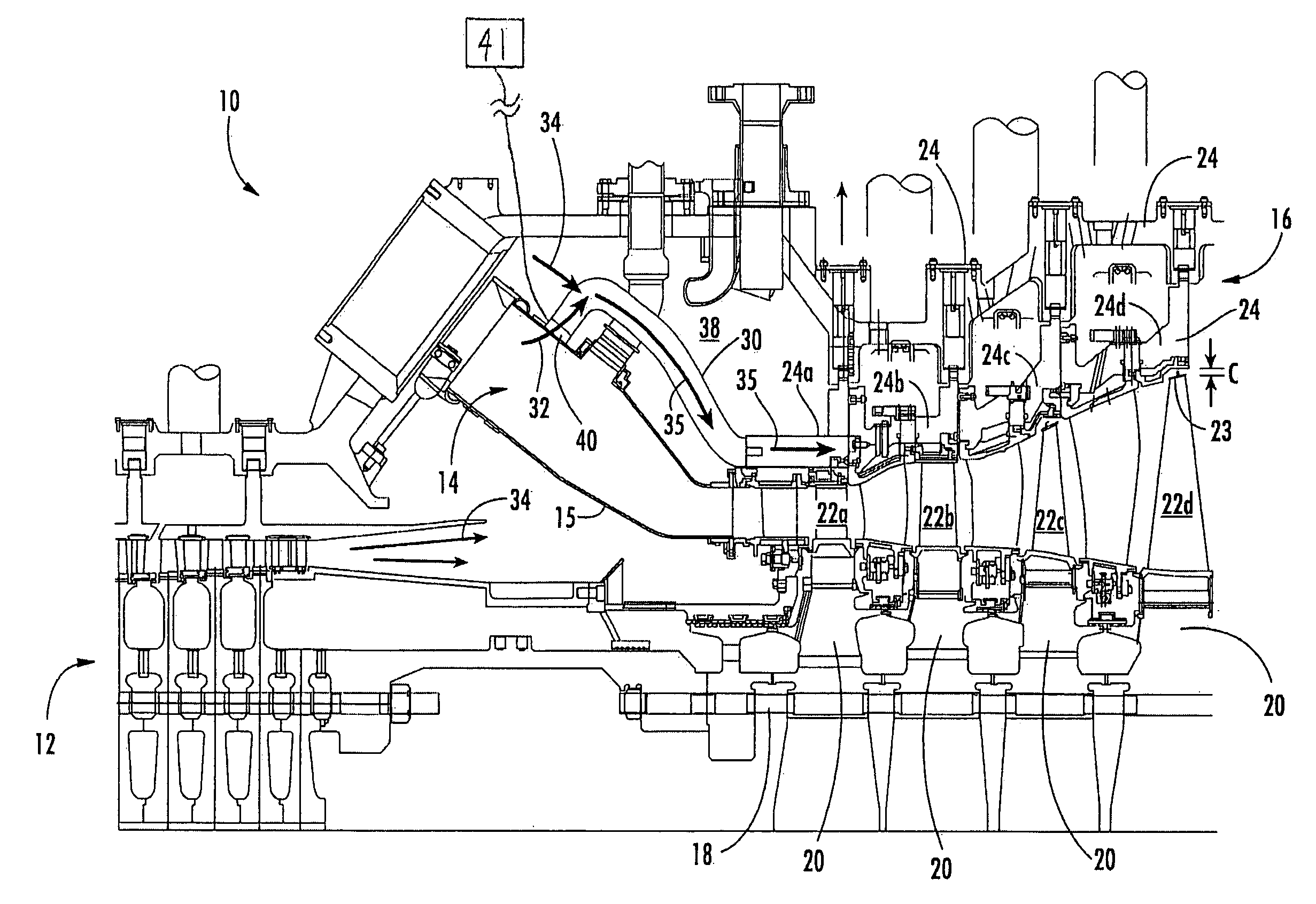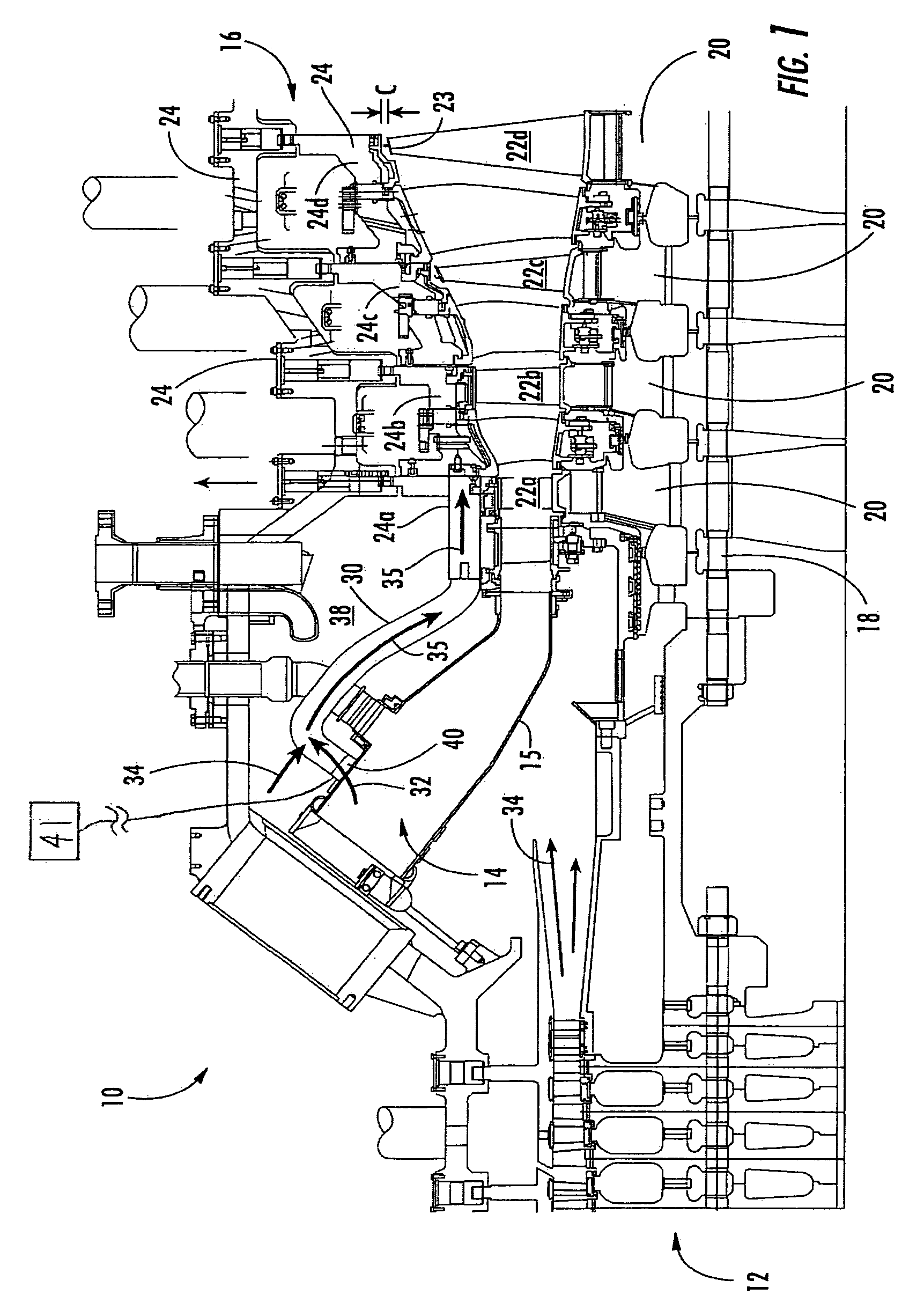Blade tip clearance control
a technology of blade tip and clearance control, which is applied in the direction of engine components, pumps, non-positive displacement fluid engines, etc., can solve the problems of blade tip rubbing, difficult to ensure that adequate blade tip clearance is maintained, and blade tip clearance can actually decrease, so as to achieve the clearance between the blade tips
- Summary
- Abstract
- Description
- Claims
- Application Information
AI Technical Summary
Benefits of technology
Problems solved by technology
Method used
Image
Examples
Embodiment Construction
[0012]Aspects of the present invention relate to actively managing blade tip clearances while a turbine engine is operating under transient conditions such as at engine startup or during part load operation. Aspects of the invention are described in connection with a turbine engine system and a method of operation.
[0013]Embodiments according to aspects of the invention are shown in FIG. 1, but the present invention is not limited to the illustrated structure or application. Further, the following detailed description is intended only as exemplary.
[0014]Aspects of the invention can be applied to a variety of turbine engine systems. A turbine engine 10 can generally include a compressor section 12, a combustor section 14 and a turbine section 16. Each of these sections can have a variety of components and configurations as would be appreciated by one skilled in the art. For example, the combustor section 14, illustrated with a transition 15, contains hot combustion gases flowing to th...
PUM
 Login to View More
Login to View More Abstract
Description
Claims
Application Information
 Login to View More
Login to View More - R&D
- Intellectual Property
- Life Sciences
- Materials
- Tech Scout
- Unparalleled Data Quality
- Higher Quality Content
- 60% Fewer Hallucinations
Browse by: Latest US Patents, China's latest patents, Technical Efficacy Thesaurus, Application Domain, Technology Topic, Popular Technical Reports.
© 2025 PatSnap. All rights reserved.Legal|Privacy policy|Modern Slavery Act Transparency Statement|Sitemap|About US| Contact US: help@patsnap.com


